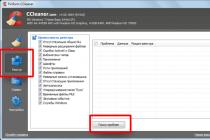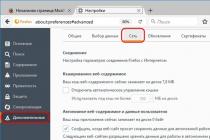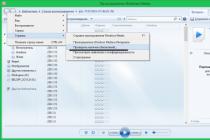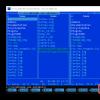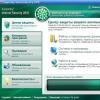APC Back-UPS 700 - one of the most popular models uninterruptible power supply for household use among Russian consumers. The device has a convenient form factor, has 8 sockets (4 - backup power, 4 more - protection against power outages), there is voltage stabilization (step sine wave). What are technical specifications the battery installed in it? What non-original batteries can be installed in it? We will consider this in detail in our article.
APC Back-UPS ES 700 uses batteries of the type RBC17... Voltage - 12 V, size - 65x94x151 mm, fastening (terminals) - type 6.35 mm.
In theory, any 12V lead-acid battery is suitable for this UPS, as the built-in charge controller is optimized for such batteries.Which one is installed?
The manufacturer installs an RBC17 battery in the APC Back-UPS 700, meeting the following characteristics:
- type - lead-acid battery, maintenance-free;
- voltage - 12 V;
- capacity - 9 Ah (48 V * A * h);
- technology - GEL (gel impregnation is used inside as an electrolyte);
- dimensions - 65x94x151 mm;
- terminals - 4.75 / 6.35 mm;
- weight - 2.59 kg.
Block parameters
The permissible charging current of the original battery is 3.6 A, output power: 405 W peak, 200 W typical. In the first mode, the UPS will work for 3.9 minutes, with half load (200 W) - about 15 minutes.
Permissible operating conditions under which the declared characteristics are preserved rechargeable batteries, - from 0 to 40 degrees Celsius.Problems
Average lifetime of the built-in battery in APC Back-UPS 700 is 3-5 years old(no more than 40 charge / discharge cycles per year). After that, it loses its initial capacity and when the UPS switches to standby mode, it simply turns off the device (if the output voltage drops below 190 V, the circuit is automatically disconnected to protect the supplied device).
Possible breakdowns
The most common failure of installed batteries is a drop in terminal voltage, indicating that some of the battery sections are out of order.
In our laboratory, the UPS of the renowned APC company is tested again. We already have the products of this company. The findings were mixed. Today we will conduct another testing of the products of this famous brand.
Description
The tested UPS belongs to the Back-UPS ES series, according to the manufacturer, it is " Cost-effective battery backup and power protection devices for home computers"and" L best value for money for protection computer systems at home ".
The manufacturer claims the following product characteristics:
| Input voltage, frequency | Nominal 230 V, 50/60 Hz |
| Output (battery operation) voltage, frequency | 230 V / 50 Hz |
| Automatic voltage regulator | No |
| output power | 700 VA / 405 Watt |
| Output waveform | step approximation of a sine wave |
| Battery life 50% / 100% load | 15.1 / 3.9 minutes |
| Function for starting equipment without connecting to the mains | There is |
| Battery type, voltage and capacity | RBC17 - Maintenance Free Sealed Lead Acid Battery with Thickened Electrolyte |
| Time to recharge batteries to 90% after discharge to half load shedding level. | 16 hours |
| Indicators | LED showing - On Line (mains operation) - On Battery - Replace battery |
| Sound alarm | Signal for switching to battery mode, special signal for low battery power, overload signal. |
| Self-diagnosis | at startup and control by software |
| Overload protection for mains operation | Continuous multi-pole noise filter: IEEE 0.5% residual voltage amplitude: Surge suppression without time delay: UL 1449 compliant. Energy absorbed 310 Joules. |
| Data line protection | Telephony protection, RJ-11 socket. 10/100 Base-T Ethernet protection, RJ-45 socket. |
| Interface | USB |
| Monitoring | software supports Windows 98 / ME / 2000 / XP MAC OS X 10.2 / 10.3 |
| Dimensions W × D × H | 230 x 285 x 86 mm |
| The weight | 6.8 kg |
| Output connectors | 4 × Schuko CEE7 (Battery Backup) 4 × Schuko CEE7 (Surge Protection) |
| Acoustic noise level at a distance of 1 meter from the surface of the device | 45 dBA |
| Compliance with the requirements | CE, GOST, NEMKO |
| Working conditions |
0-15000 meters |
The UPS is delivered in a colorfully decorated box measuring 132 × 300 × 366 mm, the weight of the packed set is 7.3 Kg. For ease of transportation, the box is equipped with a plastic handle. Based on the sticker on the box, the UPS under test was manufactured in the Philippines.

The delivery set includes:
- instruction manual in Russian and English
- warranty registration card with mailing envelope
- 3 sheets explaining the Lifetime Equipment Protection Program *
- safety instructions in 18 languages, including Russian
- Quality Assurance Test sheet
- phone numbers and addresses of APC offices in the world
- interface cable for communication with a PC (USB)
- telephone cable RJ-11 (6P2C)
- PowerChute Personal Edition software CD **
* — Lifetime Equipment Protection Program is a lifetime insurance policy for equipment protected by APC. In the event of equipment damage to the utility power line, APC will replace or repair it. The amount of insurance compensation reaches $ 200,000 for Australia, and 100,000 Euros for a number of European countries. Insurance conditions do not apply to the Russian market.
The equipment quality can be assessed as satisfactory. The product is backed by a standard three-year warranty from the date of manufacture of the UPS. The date of issue is determined by the serial number.

The UPS case is made entirely of plastic and consists of two halves - an upper and a lower one. They are connected by means of grooves and four screws. The quality of casting and plastic is very good, no flash was found. At the top of the UPS there is an LED indicator that changes color depending on the mode of operation of the UPS - On line (green), On battery (flashing green), Replace battery (red). To the right of the indicator is the Power button, recessed to protect against accidental pressing. Also on the top panel there are two blocks of euro-sockets, four pieces each. One unit is connected through a filter, and the second is battery powered. On the right, at the end of the UPS, there are RJ-45 jacks, one for connecting to a USB port of a PC, and two others for protecting telephony and a computer network. In the center is the 1.83 meter power cord and is reusable. automatic fuse by 10 A.

There is a battery compartment cover on the bottom of the UPS. The back panel contains slots for screws. Suspension is possible both vertically and horizontally.
Internal organization
The UPS contains a replaceable battery cartridge manufactured by APC.

Its capacity is 9 Ah, operating voltage is 12 V. The cartridge is an ordinary CP 1290 battery manufactured by the Chinese company Vision.

It should be noted that the CP series battery is designed for a 20 hour discharge. With an hourly discharge mode, its capacity, according to the manufacturer, is only 5.8 Ah. Typical battery discharge time in UPS operation is 10-30 minutes. In this mode, the capacity will be less than 4 Ah. Battery life 200 cycles 20 hours 100% discharge. With a more intense discharge, the resource may be less.
The battery can be replaced by the user. The replacement procedure is described and shown in the pictures in the instructions. No tools are required for this, the battery compartment cover is snap-fastened and easily slides down.
All main electronics are located on one double-sided printed circuit board located at the top of the UPS cabinet. The battery compartment is separated from the electronics by a partition. The board itself and the installation of elements on it, at first glance, are made with high quality, the correspondence of the elements to the schematic diagram is signed. Planar components are widely used. Installation of elements is one-sided.
The noise filter is made according to a simplified scheme, two varistors and a capacitor. Ferrite beads are put on the mains wires.
RJ-45 protection is complete, for all four pairs of computer network and telephony.

Switching is carried out by a relay, the maximum switching current is 12 A at a voltage of 250 V, which in this case allows you to connect a load with a maximum peak power of up to 3000 VA.

An inverter based on two transistors manufactured by the company, forms a two-stage approximation of the sine. The inverter is made according to the usual, low-frequency scheme, with a transformer. Strangely, a high-frequency circuit is used in a product similar in form and content. The power consumption of the UPS when operating on battery power without load was 7 W. Each transistor has a power of 330 watts and an operating temperature range of up to 175 ° Celsius. The transistors are located on two massive heatsinks with an area of 40 sq. Cm. each. The type and quality of the generated signal at different loads are clearly visible on the oscillogram.

Again, we see impulses at the edges of the signal. A completely different inverter, with consistently unsatisfactory results. The following oscillogram shows a fragment of the signal at 50% load.

This lack of circuitry leads to increased power consumption, a decrease in efficiency and the appearance of a UPS output electromagnetic interference in the range of 15-17 kHz.
Testing
The UPS under test is not equipped with an autotransformer voltage regulator. However, we provide a graph of output voltage versus input voltage. The switching hysteresis is 5 V in the range increased voltage, and 10 V - at reduced voltage.
In APC Back-UPS ES 700 using the supplied software PowerChute has the ability to set the output voltage range, from 188-208 to 252-272 V in 1 V steps. The graph above shows the operation of the UPS with settings 208-244. Even in this minimum range, the UPS does not operate satisfactorily, outputting a voltage that is 14% higher than nominal and 11% lower than nominal. This can damage the connected equipment and prevent uninterrupted operation.
When the voltage in the supply network goes beyond the set range, the UPS switches to battery power, notifying the user about this by means of an audible signal. When switching to batteries, the UPS emits a short beep every 40 seconds. The operation of the UPS with a battery discharged to a critical level is accompanied by a signal with a frequency of 0.6 seconds.
The transition time to the battery was determined from the oscillogram at a nominal load of 405 W. The transition time to battery power was 5 ms.

The UPS has been tested for battery life under various load levels. Synthetic tests were conducted with resistor loads of 40%, 50%, 60%, 80% and 100% of the UPS rating. The output voltage was measured digital multimeter... During operation without load, it was 229 V.
| Interest | 50% | 60% | 80% | 100% | 160 watts | 200 watts | 240 watts | 320 watts | 400 watts |
As you can see, in the entire range of loads, the UPS fits into GOST-13109-97 and produces an average of 227 V. Only at full load, there was a slight decrease in voltage, which did not go beyond the normal range. The recommended load power of the UPS according to the test results is no more than 400 W.
For testing under real load, a test computer with the following configuration was used:
In total, four configuration options for the test computer were collected:
- Integrated SiS Mirage 400W PSU with Passive PFC: DIVX-SiS
- ATI X700 400W PSU with passive PFC: DIVX-ATI
- ATI X700 400W PSU with passive PFC: 3DM5-ATI
- ATI X700, 550W PSU with active PFC and auto-voltage: 3DM5-ATI-PFC
From left to right in the diagram:
DIVX-SiS- Configuration with a video adapter built into the motherboard. Play from hard disk HD movie Shrek (1280 × 720 × 24 × 1700 kbps video bitrate, AC3 track 384 kbps). Processor load 17-25%.
DIVX-ATI- Playback from hard disk HD-movie Shrek (1280 × 720 × 24 × 1700 kbps video bitrate, AC3 track 384 kbps). Processor load 17-25%.
3DM5-ATI- We ran the 3Dmark05 v1.1.0, 1024 × 768 test package in GT1 mode, which should simulate the work of a modern toy.
3DM5-ATI-PFC- Configuration with a 550 W power supply, active PFC, autovoltage 127-230 V. A test package 3Dmark05 v1.1.0, 1024 × 768 was performed in GT1 mode, which should simulate the operation of a modern toy.
Battery charging parameters are one of the most important factors affecting the life of the battery, and therefore the UPS itself. For the CP 1290 batteries used in the cartridge, the manufacturer has set a maximum charging current of 2.8 A. Considering the importance of the battery charging mode, two tests were carried out. In the first (yellow line), the UPS was discharged to a load of 100% (400 W) before automatic shutdown, in the second (red line), after being discharged to a load of 50% (300 W), the UPS was successively discharged to a lower load until the battery was completely discharged.
It took 19 hours to recover the charge after deep discharge. It took more than 30 hours to fully charge the battery, the charge current at the beginning was 370 mA. During 19 hours the charge current averaged 350 mA. It took another 10 hours to reach a charging current of 50 mA and a voltage of 13.6 V. Recovery after an intense discharge took 9 hours. Based on the measurement results, the charging circuit was found to be satisfactory. The disadvantages include a small charging current, the advantages - its stability at a low voltage of the supply network.
To test the cold start system, the UPS was connected to a load without utility power. The UPS has turned on at full rated load. To verify compatibility with power supplies with an active PFC and a wide input voltage range, the UPS was connected to a computer with an FSP550-60PLN power supply equipped with an active PFC and an input voltage range of 100-240 V. There were no problems when working together. identified the UPS battery:

With support for the Smart Battery standard, basic power management functions are available on-board operating system.

An icon familiar to all laptop owners appears in the tray.
The set includes proprietary software PowerChute Personal Edition 1.5. It provides enhanced power management and UPS configuration options.

Its installation was automatic and did not cause any problems. This program is discussed in more detail in a separate article.
Output
The UPS under test is a typical home appliance. The most, in our opinion, a significant drawback, from the point of view of ergonomics, is the use of the RJ-45 connector for communication with a PC via USB interface... And if in a UPS that can be installed in a rack, this is still justified (you can put it into a patch panel), then in a "home" UPS this is unacceptable. Regulation of voltages, upon reaching which the UPS switches to battery power, is insufficient to comply with the output voltage of GOST.
Advantages
- Stability of the output voltage when operating on battery power
- Wall mountable
- Euro sockets provide easy connection
- Full protection of telephony and local network
- Smart Battery standard support
- Quality software included
disadvantages
- Simplified line filter
- Signal edge pulses when operating on battery power
- RJ-45 USB connector.
- Output voltage for mains operation exceeds ± 10%
The ARS company has become almost a monopolist in the source market for a long time. Almost every user with a UPS uses the products of this particular company. This is an indicator that the company produces really high quality equipment. Strictly speaking, APC is a subsidiary of the giant Shneider Electric. So it is more correct to consider this office as a manufacturer.
As for the APC products, they are traditionally of high quality and hardy. The company specializes in the production of uninterruptible power supplies, which means that the main criterion in evaluating products is battery life and protection against voltage surges. And with this, the APC products are all right. Relatively recently, the company released the APC Back-UPS 650 UPS. We will talk about it.
A little about the device
APS Back-UPS 650 is a logical continuation of a series of line-interactive uninterruptible power supplies. The device has all the necessary characteristics, while it is devoid of options that are completely unnecessary for such a device. Some top models are equipped with a miniature LCD screen, but for such a device it is not really needed, since the power supply is also spent on powering the screen. And in terms of battery life, this is not very good. Most UPSs are equipped with simple LED indicators that indicate the battery level and mode of operation.

There are several modifications of this product with the prefixes CS, RS and Pro. They all differ from each other, but only slightly. The difference is, as a rule, in some technical characteristics. It is worth noting that the same output voltage is the hallmark of all APC Back-UPS 650 uninterruptible power supplies, 230 V is the limit for them. Even outwardly, these devices are almost identical. But you need to disassemble them all to complete the picture.
CS version
The CS line turns out to be almost the cheapest among the APC 650 series devices. The battery has modest (relatively) characteristics and a standard appearance for devices of this class. Nothing extra. Everything is strictly in order to ensure uninterrupted power supply of the computer elements in the event of a power failure.
APC Back-UPS CS 650 is available in black only. This is even good, since black is a versatile color. It is in no way capable of spoiling the appearance of the workplace. The austerity of the APC CS-version is even good. Because such devices should work, and not attract attention with a bright appearance. Now let's see what this "uninterruptible power supply" has, so to speak, under the hood.
CS version specifications
The main criteria by which it is customary to evaluate uninterruptible power supplies are battery capacity and the availability of protection against power surges. Everything else fades into the background. Now let's see what APC Back-UPS CS 650 can offer us. In principle, like all line-interactive uninterruptible power supplies, APC products have typical characteristics, and you shouldn't go into them too much. But there are still differences. Therefore, we cannot evade an analysis of these very differences. So let's go.

UPS power
This parameter is responsible for stable power supply to all components of the computer. If there are not enough numbers, then the computer simply will not work. The power of this UPS is 650 VA. This is enough for a medium-sized PC. For a gaming machine, you will have to look for something more powerful.
Battery capacity
This UPS has a 7.2 A / h battery with an operating voltage of 12 V. How long will it last for Strictly speaking, it all depends on the configuration of the computer. The more powerful your machine is, the less time you have to properly shut down your PC in the event of a crash. However, the average time for computers of moderate configuration (of which the majority) is 1-3 minutes. Depending on the load on the computer components. Not a bad result. The time to fully charge the battery (after the first start-up) is 22 hours. Too much, but what can you do? You have to sacrifice something in the name of stability.
Overvoltage protection
This option is available in APC Back-UPS 650 CS version. Moreover, this component copes with its work with a bang. Numerous tests show that the uninterruptible power supply is able to equalize the voltage and supply it to the computer. Thus, all components of your computer are reliably protected from power surges.
CS version connectors and interfaces
The APS Back-UPS 650 CS version has four connectors for Euro power plugs. Moreover, three of them are used to connect devices directly to the battery. They are needed primarily for devices that need constant power supply ( system unit, monitor). The fourth connector is for connecting a device that does not need constant power (printer, scanner). The latter is equipped only with a voltage stabilizer.

In addition, the UPS has connectors for protecting the telephone line and one more for connecting an uninterruptible power supply to a PC. Connectors for a telephone line are needed for those who want to protect their communication devices from voltage surges. Also, the UPS can be connected to a computer and set up the correct process for shutting down the PC in case of power loss. To do this, the package contains a disc with proprietary software APC Back-UPS CS 650. The instructions included in the package will help you in performing this process. Despite the statements of some users that nothing is clear in the instruction manual, in our opinion, the instruction is very detailed. She very accurately describes the techniques for working with the device and the features of the device itself. There is even a component layout.
RS version
The APC Back-UPS RS 650 is an almost complete clone of the CS version. A slight difference is observed only in the technical characteristics of both devices. By appearance these two devices are indistinguishable as siblings. Why is that? Apparently, the company decided to save on design. In principle, it is not important for such a device. The main thing is that the apparatus does its job well. And the uninterruptible power supply of the RS version copes with this no worse than its "twin brother".

If the CS version was intended to work with medium-power computers, then the RS will pull only office PCs. For other tasks, its power is not enough. But this does not mean that it is worse. It's just not made for that. If you need a more powerful uninterruptible power supply, then it makes sense to pay attention to the Pro version (more about it below). A good increase in power will turn out for almost the same money.
Specifications RS
APC Back-Ups 650 RS version has its own technical characteristics, which, however, do not differ much from those inherent in CS version devices. This is as it should be, since these devices are in the same price range. Therefore, there can be no significant differences between them. Let's see what the RS version is.
Power
The Uninterruptible Power Supply of the RS version has a total capacity of 650 VA, but it is short-lived. The constant is 390 watts. For office computers It's enough. But nothing more. And yet the UPS is capable of providing professional protection against power surges and sudden power outages.

Battery capacity
The battery is installed here exactly the same as in the CS version. But for some reason, the battery life has decreased dramatically. Now the user has only 1-1.5 minutes to turn off his PC as required. Perhaps this is due to the reduced power of the device. Be that as it may, but for office PCs this is enough.
Overvoltage protection. Strictly speaking, this option is available in all APC uninterruptible power supplies. And it works the way it should. For without it, the uninterruptible power supply would be just a battery. The RS version is no exception. Protection is present and works well. The voltage surges are leveled, and a completely even pulse is sent to the PC.
Connectors and interfaces RS version
There are no differences at all here. The same four earthed Euro sockets, the same inputs to protect the telephone connection. The same classification with a division into important (with battery power) and "not very" (only with a rectifier). The connector for connecting the UPS to the computer is also in place. And in the delivery set - traditionally a disc with proprietary software and operating instructions. Moreover, the latter has an adequate Russian language. This is another plus for the ARS company.
Battery key
In all versions of APC devices, there is also a so-called battery key. It is a flat plug. It is needed in order to activate the battery and start charging it when the uninterruptible power supply is connected to the network. When purchasing a UPS, it is removed. This is done in order to prevent the battery discharge cycle. This way it will last longer. To activate the device, you should plug this plug into the socket located right there before connecting the uninterruptible power supply to the network. After turning on the UPS, the battery charging process will begin.
Pro version
The APC Back-UPS 650 BX650CI Pro version is designed specifically for those who want their computer to run longer on battery power during a power outage. Unlike the RS and CS versions, the battery life in the Pro version is 5.5 minutes. And this is at full load. And in partial UPS mode, it is able to provide a PC with power for 14-15 minutes. This is an absolute record among devices in this price category.
Differences between Pro and CS and RS
The Pro version is identical to the RS and CS. The same number of connectors and functions. The same voltage rectifiers. Even a battery from the same manufacturer, only with a higher capacity. It is clear that the Pro version UPS will cost a little more, but the difference is not critical. Yes, and it can also be connected to a PC and synchronized. APC Back-UPS Pro 650 is the ideal line-interactive uninterruptible power supply for the average user. Plus, there is a wonderful balance of "price-quality".
APC Back UPS is a series of devices designed specifically for use in a domestic environment. Such devices are in great demand today, which is explained by the affordable cost and sufficient (low and medium) level of performance. APC Back UPS versions are capable of operating during short power outages.
For what purposes are used
Whatever the uninterruptible power supply, its main task is always to provide the consumer with high-quality electricity, with a minimum level of noise and various kinds of interference for a while, while there is no connection to the mains. Back UPS is no exception, however, this group of devices was created for a certain category of consumers, due to the technical characteristics of the device.
So, the level of performance does not allow the use of this technique in harsh conditions. Recommended tasks for solving by means of this group of devices are home use. Moreover, these uninterruptible power supplies are able to protect equipment from surges passing through telephone, electrical and coaxial lines.
Manufacturer information
Uninterruptible power supplies of this type are the result of the activities of the entire American Power Conversion corporation, which was registered in 1981. At the initial stage, there were only three engineers in the working group. Five years after founding, the company receives its first product award. Until 2004, the number of awards reaches 100.
 Since 2007, the corporation becomes the property of Schneider Electric. But the Back UPS series has retained its name. Today, there is a separate division, the main task of which is the development and production of equipment for the protection of power supply.
Since 2007, the corporation becomes the property of Schneider Electric. But the Back UPS series has retained its name. Today, there is a separate division, the main task of which is the development and production of equipment for the protection of power supply.
Model overview
Back UPS is available in several flavors. Each of them also has a certain number of performances:
- HS series - floor standing single-phase devices rated for 500 VA;
- APC devices Back UPS CS with power from 350 to 650 VA (desktop equipment);
- RS series - floor standing devices with power from 500 to 1500 VA;
- APC devices Back UPS ES 400-700 VA (for installation on a table).
Devices from the latter group are very popular, which is primarily the result of a good balance of build quality, reliability of operation and acceptable cost of equipment.
Watch a video about the ES 525 model:
APC Back UPS devices of this series are presented in versions, each of which differs in power: 400, 525, 550, 700 VA. The larger the value of this parameter, the greater its performance. For example, the ES 525 variant allows input voltage fluctuations in the range from 160 to 280 V, switching to battery occurs in 5 ms. The APC Back UPS ES 525 version protects the consumer from voltage fluctuations and filters noise in the network.
Depending on the load applied to the equipment of this model, the duration of autonomous operation will differ. So, APC Back UPS ES 525 at maximum load will work for about 4 minutes, and with an average performance level, the operating time increases almost four times. APC Back UPS ES 525 is equipped with 4 outlets, one of which has surge protection.
Another variant of the same group is APC Back UPS ES 700. Its total output power is 700 VA, the active component is 400 W. When switching to battery mode, a fairly high level of stability of the output voltage is observed - up to 5% fluctuations.

ES 700 series
APC Back UPS ES 700 operates in autonomous mode for almost the same length of time (3.9 minutes at full load, 15 minutes at partial load). APC Back UPS ES Model 700 provides consumer protection against high voltage surges, protection of telephone lines and local networks, and filtering of interference.
If we consider another group of devices, then we can highlight the APC Back UPS CS 500 version. Single-phase device designed for power up to 500 VA.
The color scheme of the case is light. The range of fluctuations of the input mains voltage is approximately the same as that of the previously considered versions: 160-282 V, while the APC Back UPS CS 500 provides even more reliable operation of the consumer, since when switching to autonomous power supply mode, the CS 500 model does not more than 3% of the voltage value error. The device goes into battery mode in an average of 10 ms. It is possible to replace the battery, and for the convenience of APC users, the Back UPS CS 500 version provides a light indication.
We watch a video about the Back UPS ES 650 model:
Another popular variant of the same group, which has a rather high level performance - APC Back UPS CS 650. This design is identical in a number of main technical characteristics to the above considered analogs (input voltage and frequency range, type of current - single-phase). APC Back UPS CS 650, as can be seen from the designation, operates at 650 VA.
However, a noticeable disadvantage of this option is the short-term operation when the network is disconnected. APC Back UPS CS 650 version operates at full load for no more than 2.4 minutes. But we must not forget that the main area of application of such equipment is home PCs, then the capabilities of the Back UPS CS 650 models are quite enough to complete the work processes on the computer.
Advantages and disadvantages of products of this brand

UPS 500 Series
Considering a number of advantages of this technique, it is quite understandable why it is so popular:
- Long battery life;
- The APC Back UPS Series boasts an increased level of reliability due to build quality;
- Consumer protection from interference, network noise and high-voltage surges;
- APC Series Back UPS protects local area networks and telephone lines of voltage drops;
- High speed of transition to offline mode;
- USB interface.
Of the shortcomings, only the cost can be distinguished, since the most modest performance characteristics of the APC Back UPS series are offered at a price that is slightly higher than that of similar devices from other brands. But even the most affordable devices are of high quality.
For example, the APC Back UPS CS 500 version is offered at a price of 5,500 rubles. Accordingly, more efficient equipment will cost more. But the APC Back UPS ES model 525 is offered at a noticeably lower price - 4,400 rubles, despite the fact that its power is slightly higher than the previously reviewed version.
How do buyers evaluate products?
APC's Back UPS series almost universally receive positive reviews... But there are also some remarks. For example, depending on the design, the device can make a noticeable noise. And the cost does not always satisfy buyers, someone even prefers to buy an analogue of another company at an affordable price. The rest of the APC Back UPS 500 devices and other models of different series of this brand have no complaints.
 And in some cases, it is even possible to restore a battery that has worked out its life. Considering that many models use maintenance-free batteries, the ability to restore their functions using improvised means is very attractive. In addition, the APC Back UPS ES model 525 and other versions of this series fully meet the requirements of customers, and therefore this kind of equipment is very popular.
And in some cases, it is even possible to restore a battery that has worked out its life. Considering that many models use maintenance-free batteries, the ability to restore their functions using improvised means is very attractive. In addition, the APC Back UPS ES model 525 and other versions of this series fully meet the requirements of customers, and therefore this kind of equipment is very popular.
The complete lack of information about such common devices as uninterruptible power supplies is surprising. We are breaking through the information blockade and are starting to publish materials on their construction and repair. From the article you will receive general idea about the existing types of uninterruptible power supplies and more detailed, at the level schematic diagram, - about the most common Smart-UPS models.
The reliability of computers is largely determined by the quality electrical network... Power outages such as surges, surges, lows, and power outages can result in keyboard lock, data loss, damage motherboard and so on. To protect expensive computers from the troubles associated with power network use uninterruptible power supplies (UPS). The UPS eliminates problems associated with poor quality power or temporary lack of power, but is not a long-term alternative power source like a generator.
According to the expert-analytical center "SK PRESS", in 2000 the volume of UPS sales by Russian market amounted to 582 thousand units. If we compare these estimates with data on sales of computers (1.78 million pieces), it turns out that in 2000, every third computer purchased is equipped with an individual UPS.
The overwhelming part of the Russian UPS market is occupied by products of six companies: APC, Chloride, Invensys, IMV, Liebert, Powercom. APC products have been maintaining the leading position in the Russian UPS market for many years now.
UPSs are divided into three main classes: Off-line (or stand-by), Line-interactive and On-line. These devices have various designs and characteristics.
Rice. 1. Block diagram of an off-line UPS
A block diagram of an Off-line UPS is shown in Fig. 1. During normal operation, the load is supplied by the filtered mains voltage. EMI / RFI Noise filters on metal oxide varistors are used to suppress EMI and RFI in the input circuits. If the input voltage falls below or above the set value, or disappears altogether, the inverter turns on, which is normally off. By converting the DC voltage of the batteries into AC, the inverter supplies the load from the batteries. The shape of its output voltage is rectangular pulses of positive and negative polarity with an amplitude of 300 V and a frequency of 50 Hz. Off-line UPSs operate uneconomically in power grids with frequent and significant voltage deviations from the nominal value, since frequent switching to operation on battery power reduces the service life of the latter. The power of the Off-line UPS models manufactured by ARS, the Back-UPS model, is in the range of 250 ... 1250 VA, and for the Back-UPS Pro models, in the range of 2S0 ... 1400 VA.

Rice. 2. Block diagram of a Line-interactive UPS
A block diagram of a Line-interactive UPS is shown in Fig. 2. Just like the Off-line UPS, they relay the AC mains voltage to the load, while absorbing relatively small voltage surges and smoothing out noise. The input circuits use an EMI / RFI Noise filter on metal oxide varistors to suppress EMI and RFI. If an emergency occurs in the mains, then the UPS synchronously, without losing the phase of the oscillation, turns on the inverter to supply the load from the batteries, while the sinusoidal shape of the output voltage is achieved by filtering the PWM oscillation. The circuit uses a special inverter to recharge the battery, which also works during line voltage surges. The range of operation without battery connection is expanded due to the use of an autotransformer with a switched winding in the input circuits of the UPS. Transfer to battery power occurs when utility voltage is out of range. The power of the Line-interactive class Smart-UPS UPS manufactured by ARS is 250 ... 5000 VA.
Rice. 3. Block diagram of the UPS class On-line
The block diagram of the UPS of the On-line class is shown in Fig. 3. These UPSs convert the AC input voltage to DC, which is then converted back to stable AC by means of a PWM inverter. Since the load is always supplied by the inverter, there is no need to switch from the mains to the inverter, and the transfer time is zero. Due to the inertial DC link, which is the battery, the load is isolated from mains anomalies and a very stable output voltage is formed. Even with large deviations in the input voltage, the UPS continues to supply the load with pure sinusoidal voltage with a deviation of no more than + 5% of the user-set nominal value. APC On-line UPSs have the following output powers: Matrix UPS models - 3000 and 5000 VA, Symmetra Power Array models - 8000, 12000 and 16000 VA.
The Back-UPS models do not use a microprocessor, while the Back-UPS Pro, Smart-UPS, Smart / VS, Matrix, and Symmetna use a microprocessor.
The most widely used devices are: Back-UPS, Back-UPS pro, Smart-UPS, Smart-UPS / VS.
Devices such as Matrix and Symmetna are used primarily for banking systems.
In this article, we will consider the design and diagram of the Smart-UPS 450VA ... 700VA models used for power personal computers(PC) and servers. Their technical characteristics are given in table. 1.
Table 1. Specifications APC Smart-UPS models
| Model | 450VA | 620VA | 700VA | 1400VA |
|---|---|---|---|---|
| Allowable input voltage, V | 0...320 | |||
| Input voltage for mains operation *, V | 165...283 | |||
| Output voltage *, V | 208...253 | |||
| Input circuit overload protection | Returned to starting position circuit breaker | |||
| Frequency range for mains operation, Hz | 47...63 | |||
| Time of switching to battery power, ms | 4 | |||
| Maximum load power, VA (W) | 450(280) | 620(390) | 700(450) | 1400(950) |
| Output voltage during battery operation, V | 230 | |||
| Frequency when operating on battery, Hz | 50 ± 0.1 | |||
| Signal waveform when operating on battery power | Sinusoid | |||
| Output circuit overload protection | Overload and short-circuit protection, overload latching shutdown | |||
| Battery Type | Lead sealed, maintenance-free | |||
| Number of batteries x voltage, V, | 2 x 12 | 2 x 6 | 2 x 12 | 2 x 12 |
| Battery capacity, Ah | 4,5 | 10 | 7 | 17 |
| Battery life, years | 3...5 | |||
| Full charge time, h | 2...5 | |||
| UPS dimensions (height x width x length), cm | 16.8x11.9x36.8 | 15,8x13,7x35,8 | 21.6x17x43.9 | |
| Net weight (gross), kg | 7,30(9,12) | 10,53(12,34) | 13,1(14,5) | 24,1(26,1) |
* User adjustable using PowerChute software.
Smart-UPS 450VA ... 700VA and Smart-UPS 1000VA ... 1400VA have the same electrical circuit and differ in battery capacity, the number of output transistors in the inverter, power power transformer and dimensions.
Consider the parameters that characterize the quality of electricity, as well as the terminology and designations.
Power problems can be expressed as:
In Russia, voltage dips, power outages and surges both up and down account for approximately 95% of deviations from the norm, the rest is noise, impulse noise (needles), high-frequency surges.
Volt-Amperes (VA, VA) and Watts (W, W) are used as power units. They differ in power factor PF (Power Factor):
The power factor for computer technology is 0.6 ... 0.7. The number in the designation of APC UPS models indicates the maximum power in VA. For example, the Smart-UPS 600VA model has a power of 400W, and the 900VA model has 630W.
The block diagram of the Smart-UPS and Smart-UPS / VS models is shown in Fig. 4. Mains voltage is applied to the EM / RFI input filter to suppress mains noise. At rated mains voltage, relays RY5, RY4, RY3 (pins 1, 3), RY2 (pins 1, 3), RY1 are switched on, and the input voltage is passed to the load. Relays RY3 and RY2 are used for the BOOST / TRIM output voltage trim mode. For example, if the mains voltage increased and went beyond the permissible limit, relays RY3 and RY2 connect an additional winding W1 in series with the main W2. An autotransformer with a transformation ratio is formed
K = W2 / (W2 + W1)
less than one and the output voltage drops. In the event of a decrease in the mains voltage, the additional winding W1 is reversed by the relay contacts RY3 and RY2. Transformation ratio
K = W2 / (W2 - W1)
becomes greater than one, and the output voltage rises. The adjustment range is ± 12%, the hysteresis value is selected by the Power Chute software.
In the event of a voltage loss at the input, the RY2 ... RY5 relays are turned off, a powerful PWM inverter powered by a battery turns on, and a sinusoidal voltage of 230 V, 50 Hz is supplied to the load.
The multi-tier power grid noise suppression filter consists of varistors MV1, MV3, MV4, choke L1, capacitors C14 ... C16 (Fig. 5). The CT1 transformer analyzes the high-frequency components of the mains voltage. The CT2 transformer is a load current sensor. The signals from these sensors, as well as the RTH1 temperature sensor, are fed to the analog-to-digital converter IC10 (ADC0838) (Fig. 6).
Transformer T1 is an input voltage sensor. The command to turn on the device (AC-OK) is sent from the two-level comparator IC7 to the base of Q6. Transformer T2 - output voltage sensor for Smart TRIM / BOOST mode. From pins 23 and 24 of IC1 2 (Fig. 6), the BOOST and TRIM signals are fed to the bases of transistors Q43 and Q49 to switch relays RY3 and RY2, respectively.
The phase synchronization signal (PHAS-REF) from pin 5 of transformer T1 goes to the base of transistor Q41 and from its collector to pin 14 of IC12 (Figure 6).
The Smart-UPS model uses an IC12 microprocessor (S87C654), which:
The EEPROM IC13 contains the factory settings, as well as the calibrated settings for the signal levels of frequency, output voltage, transition limits, battery charging voltage.
Digital-to-analog converter IC15 (DAC-08CN) generates a sinusoidal reference signal at pin 2, which is used as a reference for IC17 (APC2010).
The PWM signal is generated by IC14 (APC2020) in conjunction with IC17. Powerful field-effect transistors Q9 ... Q14, Q19 ... Q24 form a bridge inverter. During the positive half-wave of the PWM signal, Q12 ... Q14 and Q22 ... Q24 are open, and Q19 ... Q21 and Q9 ... Q11 are closed. During the negative half-wave, Q19 ... Q21 and Q9 ... Q11 are open, and Q12 ... Q14 and Q22 ... Q24 are closed. Transistors Q27 ... Q30, Q32, Q33, Q35, Q36 form push-pull drivers that generate control signals for powerful field-effect transistors with a large input capacitance. The load of the inverter is the transformer winding, it is connected by wires W5 (yellow) and W6 (black). A sinusoidal voltage of 230 V, 50 Hz is generated on the secondary winding of the transformer to power the connected equipment.
Inverter operation in "reverse" mode is used to charge the battery with a ripple current during normal work UPS.
The UPS has a built-in SNMP slot that allows you to connect additional cards to expand the UPS's capabilities:
The UPS has several voltages required for the normal operation of the device: 24 V, 12 V, 5 V and -8 V. To check them, you can use table. 2. Measure the resistance from the terminals of the microcircuits to the common wire with the UPS turned off and the discharged capacitor C22. Typical malfunctions UPS Smart-Ups 450VA ... 700VA and how to eliminate them are shown in table. 3.
Table 3. Typical UPS faults Smart-Ups 450VA ... 700VA
| Brief description of the defect | Possible reason | Troubleshooting method |
|---|---|---|
| UPS does not turn on | Batteries not connected | Connect batteries |
| Bad or defective battery, low capacity | Replace battery. The capacity of the charged battery can be checked with the high beam lamp from the car (12V, 150W) | |
| Powerful field-effect transistors of the inverter are pierced | In this case, there is no voltage at the terminals of the battery connected to the UPS board. Check with an ohmmeter and replace transistors. Check the resistors in their gate circuits. Replace IC16 | |
| Broken flexible cable connecting the display | This fault can be caused by shorting the flex cable leads in the UPS chassis. Replace the flex cable that connects the display to the UPS main board. Check if fuse F3 and transistor Q5 are working | |
| The power button is pressed | Replace SW2 button | |
| UPS turns on on battery power only | Fuse F3 blown | Replace F3. Check the health of transistors Q5 and Q6 |
| UPS will not start. Battery replacement indicator is on | If the battery is good, the UPS is not running the program correctly. | Calibrate the battery voltage using the proprietary program from APC |
| UPS does not come on line | Torn away network cable or broken contact | Connect the network cable. Check the condition of the automatic plug with an ohmmeter. Check the hot-neutral cord connection. |
| Cold soldering of board elements | Check the health and quality of the rations of elements L1, L2 and especially T1 | |
| Defective varistors | Check or replace varistors MV1 ... MV4 | |
| Load shedding occurs when the UPS is turned on. | Defective voltage sensor T1 | Replace T1. Check the health of the elements: D18 ... D20, C63 and C10 |
| Display indicators are flashing | The capacity of the capacitor C17 has decreased | Replace capacitor C17 |
| Capacitor leakage is likely | Replace C44 or C52 | |
| Defective relay contacts or board elements | Replace relay. Replace IC3 and D20. D20 diode is better to replace with 1N4937 | |
| UPS overload | The connected equipment exceeds the rated power | Reduce load |
| Defective transformer T2 | Replace T2 | |
| Defective current sensor CT1 | Replace CT1. A resistance greater than 4 ohms indicates a faulty current sensor | |
| Defective IC15 | Replace IC15. Check the voltage -8 V and 5 V. Check and replace if necessary: IC12, IC8, IC17, IC14 and the power field-effect transistors of the inverter. Check power transformer windings | |
| Battery does not charge | UPS program is not working properly | Calibrate the battery voltage with a proprietary program from the APC. Check constants 4, 5, 6, 0. Constant 0 is critical for every UPS model. Check the constant after replacing the battery |
| The battery charging circuit is out of order | Replace IC14. Check the 8 V voltage at the pin. 9 IC14, if not, replace C88 or IC17 | |
| Battery defective | Replace battery. Its capacity can be checked with a high beam lamp from a car (12V, 150W) | |
| Microprocessor IC12 defective | Replace IC12 | |
| UPS does not start up when turned on, a click is heard | Defective reset circuit | Check serviceability and replace faulty elements: IC11, IC15, Q51 ... Q53, R115, C77 |
| Indicator defect | The indication circuit is faulty | Check and replace faulty Q57 ... Q60 on the indicator board |
| UPS does not work in On-line mode | Defective board elements | Replace Q56. Check the health of the elements: Q55, Q54, IC12. IC13 is defective or will have to be reprogrammed. The program can be taken from a working UPS |
| When transferring to battery operation, the UPS shuts down and turns on spontaneously | Broken transistor Q3 | Replace transistor Q3 |
The second part of the article will consider UPS device class On-line,
OFF-LINE UPS UNIT
APC Off-line UPS includes Back-UPS models. UPSs of this class are distinguished by their low cost and are designed to protect personal computers, workstations, network equipment, trade and point-of-sale terminals. Power of manufactured Back-UPS models is from 250 to 1250 VA. The main technical data of the most common UPS models are presented in table. 3.
Table 3. Main technical data of UPS class Back-UPS
| Model | BK250I | BK400I | BK600I |
|---|---|---|---|
| Rated input voltage, V | 220...240 | ||
| Rated mains frequency, Hz | 50 | ||
| Energy of absorbed emissions, J | 320 | ||
| Peak emission current, A | 6500 | ||
| IEEE 587 Cat. A 6kVA,% | <1 | ||
| Switching voltage, V | 166...196 | ||
| Output voltage when operating from batteries, V | 225 ± 5% | ||
| Output frequency when operating on batteries, Hz | 50 ± 3% | ||
| Maximum power, VA (W) | 250(170) | 400(250) | 600(400) |
| Power factor | 0,5. ..1,0 | ||
| Crest factor | <5 | ||
| Nominal switching time, ms | 5 | ||
| Number of batteries x voltage, V | 2x6 | 1x12 | 2x6 |
| Battery capacity, Ah | 4 | 7 | 10 |
| Time of 90% recharging after discharging to 50%, hour | 6 | 7 | 10 |
| Acoustic noise at a distance of 91 cm from the device, dB | <40 | ||
| UPS operating time at full capacity, min | >5 | ||
| Maximum dimensions (H x W x D), mm | 168x119x361 | ||
| Weight, kg | 5,4 | 9,5 | 11,3 |
The index "I" (International) in the names of UPS models means that the models are designed for an input voltage of 230 V, the devices are equipped with sealed lead-acid maintenance-free batteries with a service life of 3 ... 5 years according to the Euro Bat standard. All models are equipped with suppressor filters that suppress surges and high-frequency noise in the mains voltage. The devices give appropriate audible signals when the input voltage is lost, the batteries are discharged and overloaded. The mains voltage threshold below which the UPS switches to battery operation is set using the switches on the back of the unit. Models BK400I and BK600I have an interface port that can be connected to a computer or server for automatic self-closing of the system, a test switch and a beep switch.
The block diagram of the UPS Back-UPS 250I, 400I and 600I is shown in Fig. 8. Mains voltage is supplied to the input multistage filter through a circuit breaker. The circuit breaker is designed as a circuit breaker on the back of the UPS. In the event of a significant overload, it disconnects the device from the mains, while the contact column of the switch is pushed up. To turn on the UPS after an overload, it is necessary to reset the contact bar of the breaker. The input EMI and RFI filter uses LC links and metal oxide varistors. During normal operation, contacts 3 and 5 of RY1 are closed and the UPS is supplying utility power to the load, filtering out high frequency interference. The charging current flows continuously as long as there is voltage in the network. If the input voltage drops below the set value or disappears altogether, or if it is very noisy, contacts 3 and 4 of the relay close, and the UPS switches to operation from the inverter, which converts the DC voltage of the batteries into AC. The switching time is about 5 ms, which is quite acceptable for modern switching power supplies for computers. The waveform at the load is rectangular pulses of positive and negative polarity with a frequency of 50 Hz, a duration of 5 ms, an amplitude of 300 V, an effective voltage of 225 V. At idle, the pulse duration is reduced, and the effective output voltage drops to 208 V. Unlike Smart models -UPS, the Back-UPS does not have a microprocessor, comparators and logic chips are used to control the device.
The schematic diagram of the Back-UPS 250I, 400I and 600I is almost completely shown in Fig. 9 ... 11. The multi-tier power supply noise suppression filter consists of varistors MOV2, MOV5, chokes L1 and L2, capacitors C38 and C40 (Fig. 9). Transformer T1 (Fig. 10) is an input voltage sensor. Its output voltage is used to charge batteries (D4 ... D8, IC1, R9 ... R11, C3 and VR1 are used in this circuit) and analyze the mains voltage.
If it disappears, then the circuit on the elements IC2 ... IC4 and IC7 connects a powerful inverter powered by a battery. The ACFAIL command to turn on the inverter is generated by IC3 and IC4. The circuit, consisting of comparator IC4 (pins 6, 7, 1) and electronic key IC6 (pins 10, 11, 12), enables the operation of the inverter with a log signal. "1" on pins 1 and 13 of IC2.
The divider, consisting of resistors R55, R122, R1 23 and switch SW1 (pins 2, 7 and 3, 6), located on the rear side of the UPS, determines the mains voltage below which the UPS switches to battery power. The factory setting for this voltage is 196 V. In areas with frequent fluctuations in the mains voltage resulting in frequent UPS switches to battery power, the threshold voltage should be set to a lower level. The fine adjustment of the threshold voltage is performed by the VR2 resistor.
During battery operation, IC7 generates inverter excitation pulses PUSHPL1 and PUSHPL2. In one arm of the inverter, powerful field-effect transistors Q4 ... Q6 and Q36 are installed, in the other -Q1 ... Q3 and Q37. The transistors are loaded by their collectors on the output transformer. The secondary winding of the output transformer generates an impulse voltage with an effective value of 225 V and a frequency of 50 Hz, which is used to power the equipment connected to the UPS. The duration of the pulses is regulated by the variable resistor VR3, and the frequency - by the resistor VR4 (Fig. 10). Turning on and off the inverter is synchronized with the mains voltage by the circuit on the elements IC3 (pins 3 ... 6), IC6 (pins 3 ... 5, 6, 8, 9) and IC5 (pins 1 ... 3 and 11 ... 13). Circuit on the elements SW1 (pins 1 and 8), IC5 (pins 4 ... B and 8 ... 10), IC2 (pins 8 ... 10), IC3 (pins 1 and 2), IC10 (pins 12 and 13), D30, D31, D18, Q9, BZ1 (fig. 11) activates the buzzer to warn the user of power supply problems. During battery operation, the UPS emits a single beep every 5 seconds to indicate the need to save user files. battery capacity is limited. When operating on battery power, the UPS monitors battery capacity and emits a continuous beep before battery discharge. If pins 4 and 5 of switch SW1 are open, then this time is 2 minutes, if closed - 5 minutes. To turn off the sound signal, close the terminals 1 and 8 of the SW1 switch.
All Back-UPS models, with the exception of the BK250I, have a bi-directional communication port for communication with a PC. Power Chute Plus software allows the computer to perform both UPS monitoring and safe automatic shutdown of the operating system (Novell, Netware, Windows NT, IBM OS / 2, Lan Server, Scounix and UnixWare, Windows 95/98) while saving user files. In fig. 11 this port is designated J14. Purpose of its conclusions: 1 - UPS SHUTDOWN. The UPS shuts down if a log appears on this pin. "1" for 0.5 s.
2 - AC FAIL. When switching to battery power, the UPS generates a log on this pin. "1".
3 - CC AC FAIL. When switching to battery power, the UPS generates a log on this output. "0". Open collector output.
4, 9 - DB-9 GROUND. Common wire for signal input / output. The terminal has a resistance of 20 ohms with respect to the common wire of the UPS.
5 - CC LOW BATTERY. In case of battery discharge, the UPS generates a log on this output. "0". Open collector output.
6 - OS AC FAIL When switching to battery power, the UPS generates a log on this output. "1". Open collector output.
7, 8 - not connected.
Open collector outputs can be connected to TTL circuits. Their load capacity is up to 50 mA, 40 V. If you need to connect a relay to them, then the winding should be shunted with a diode.
A regular "null modem" cable is not suitable for this port, the corresponding RS-232 interface cable with a 9-pin connector is supplied with the software.
UPS CALIBRATION AND REPAIR
Setting the frequency of the output voltage
To set the frequency of the output voltage, connect an oscilloscope or frequency meter to the UPS output. Turn the UPS into battery mode. When measuring the frequency at the UPS output, adjust the VR4 resistor to 50 ± 0.6 Hz.
Setting the output voltage value
Turn the UPS into battery mode without load. Connect a voltmeter to the UPS output to measure the effective voltage value. By adjusting the VR3 resistor, set the voltage at the UPS output to 208 ± 2 V.
Setting the threshold voltage
Set switches 2 and 3 on the rear of the UPS to OFF. Connect the UPS to a LATR-type transformer with continuously variable output voltage. Set the voltage at the LATR output to 196 V. Turn the VR2 resistor counterclockwise until it stops, then slowly turn the VR2 resistor clockwise until the UPS switches to battery power.
Setting the charging voltage
Set the UPS input to 230 V. Disconnect the red wire to the positive battery terminal. Using a digital voltmeter, adjust the VR1 resistor to set the voltage on this wire to 13.76 ± 0.2 V relative to the common point of the circuit, then restore the connection to the battery.
Typical malfunctions
Typical malfunctions and methods for their elimination are given in table. 4, and in table. 5 - analogs of the most frequently failing components.
Table 4. Typical Back-UPS 250I, 400I and 600I Faults
| Defect manifestation | Possible reason | Defect finding and elimination method |
|---|---|---|
| Smoke smell, UPS is not working | Input filter defective | Check the health of the MOV2, MOV5, L1, L2, C38, C40 components, as well as the board conductors connecting them |
| UPS will not turn on. Indicator is off | UPS input circuit breaker (circuit breaker) disabled | Reduce the load on the UPS by disconnecting some of the equipment, and then turn on the circuit breaker by pressing the contact column of the circuit breaker |
| Defective accumulator batteries | Replace batteries | |
| Batteries not connected correctly | Check if the batteries are connected correctly | |
| Inverter defective | Check that the inverter is working properly. To do this, disconnect the UPS from the AC mains, disconnect the batteries and discharge the C3 capacity with a 100 Ohm resistor, ring the drain-source channels of the powerful field-effect transistors Q1 ... Q6, Q37, Q36 with an ohmmeter. If the resistance is a few ohms or less, replace the transistors. Check the resistors in the gates R1 ... R3, R6 ... R8, R147, R148. Check the health of transistors Q30, Q31 and diodes D36 ... D38 and D41. Check fuses F1 and F2 | |
| Replace IC2 | ||
| When turned on, the UPS disconnects the load | Defective transformer T1 | Check the health of the windings of the transformer T1. Check the tracks on the board connecting the T1 windings. Check fuse F3 |
| The UPS is operating on battery power even though mains voltage is present | The mains voltage is very low or distorted | Check the input voltage with an indicator or meter. If it is permissible for the load, reduce the sensitivity of the UPS, i.e. change the response limit using switches located on the back of the device |
| UPS turns on, but no voltage is supplied to the load | Defective relay RY1 | Check the health of relay RY1 and transistor Q10 (BUZ71). Check the health of IC4 and IC3 and the supply voltage at their terminals |
| Check the tracks on the board connecting the relay contacts | ||
| The UPS hums and / or shuts down the load, not providing the expected backup time | Defective inverter or one of its elements | See sub-item "Inverter defective" |
| UPS does not provide expected backup time | Batteries are flat or lost capacity | Charge the batteries. They need to be recharged after extended power outages. In addition, batteries age quickly with frequent use or under high temperature conditions. If the batteries are approaching the end of their service life, it is advisable to replace them, even if the battery replacement alarm has not yet been sounded. Check the capacity of the charged battery with a 12V, 150W car high beam lamp |
| UPS overloaded | Reduce the number of consumers at the UPS output | |
| UPS does not turn on after battery replacement | Incorrect connection of batteries when replacing them | Check if the batteries are connected correctly |
| The UPS emits a loud tone when turning on, sometimes with a decreasing tone | Defective or discharged rechargeable batteries | Charge the batteries for at least four hours. If the problem persists after recharging, the batteries should be replaced. |
| Batteries do not charge | Diode D8 is faulty | Check if D8 is working properly. Its reverse current should not exceed 10 μA |
| Charge voltage below required level | Calibrate Battery Charge Voltage |
Table 5. Analogs for replacing defective components
| Schematic designation | Defective component | Possible replacement |
|---|---|---|
| IC1 | LM317T | LM117H, LM117K |
| IC2 | CD4001 | K561LE5 |
| IC3, IC10 | 74S14 | Consists of two K561TL1 microcircuits, the outputs of which are connected according to the pinout on the microcircuit |
| IC4 | LM339 | K1401SA1 |
| IC5 | CD4011 | K561LA7 |
| IC6 | CD4066 | K561KT3 |
| D4 ... D8, D47, D25 ... D28 | 1N4005 | 1N4006, 1N4007, BY126, BY127, BY133, BY134, 1N5618 ... 1N5622, 1N4937 |
| Q10 | BUZ71 | BUZ10, 2SK673, 2SK971, BUK442 ... BUK450, BUK543 ... BUK550 |
| Q22 | IRF743 | IRF742, MTP10N35, MTP10N40, 2SK554, 2SK555 |
| Q8, Q21, Q35, Q31, Q12, Q9, Q27, Q28, Q32, Q33 | PN2222 | 2N2222, BS540, BS541, BSW61 ... BSW 64, 2N4014 |
| Q11, Q29, Q25, Q26, Q24 | PN2907 | 2N2907, 2N4026 ... 2N4029 |
| Q1 ... Q6, Q36, Q37 | IRFZ42 | BUZ11, BUZ12, PRFZ42 |
Gennady Yablonin
"Repair of electronic equipment"


